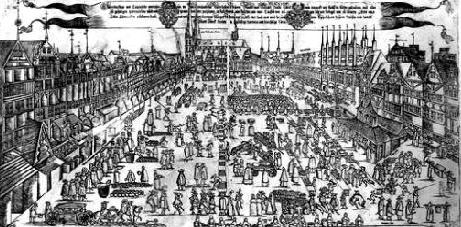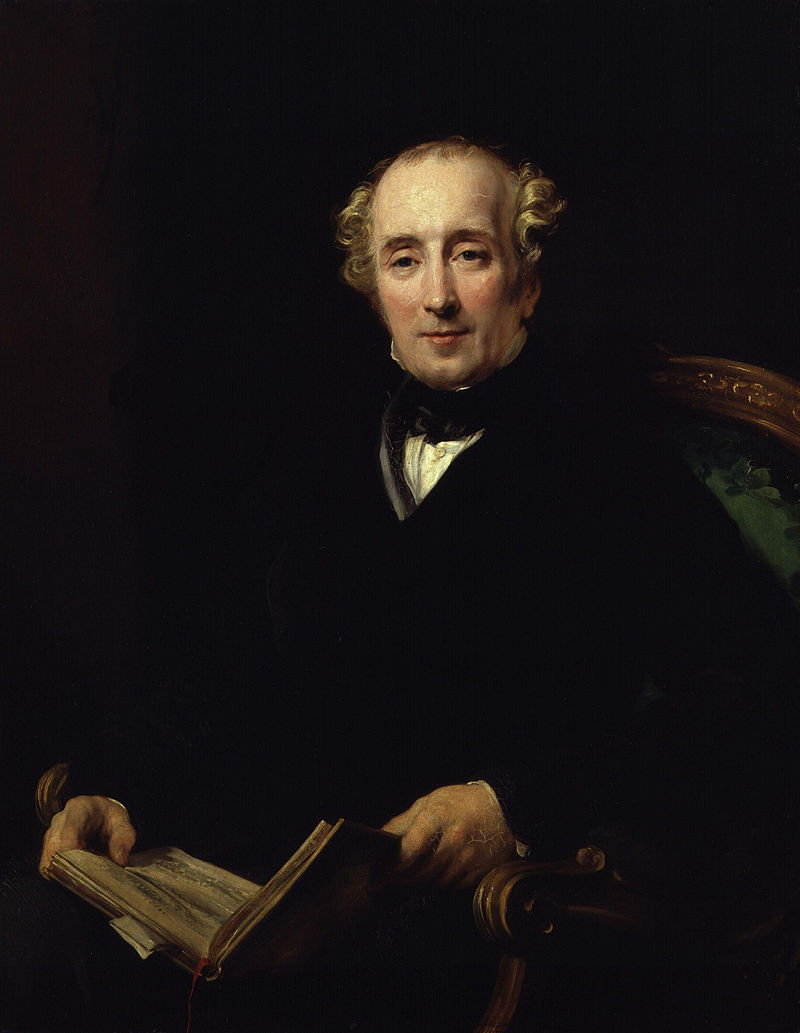By the 16th Century, Scotland's trade with Europe was on a firm footing and it achieved this by having long and established foundations, even though conflict with our Island neighbour, England, served to undermine progress.
At the end of the 13th c, Scotland was a wealthy trading Nation. For nearly 200 years, it's rulers had arguably paid more attention to peace than to war, so by the year 1286, Scotland's trading surplus- the value of exports over imports - were very high indeed, reaching levels
that would not be achieved again until the 19th/20th century.
One starting point for Scotland's prosperity was the rule of Alexander I, who came to the throne in 1107.He gave some East coast ports within easy sailing distance of the continent- such as Inverkeithing, Aberdeen and
One starting point for Scotland's prosperity was the rule of Alexander I, who came to the throne in 1107.He gave some East coast ports within easy sailing distance of the continent- such as Inverkeithing, Aberdeen and
Perth - special rights to overseas trade. When David I became king in 1124, he wanted to encourage manufacture and exports as a fruitful source of taxes and so created a wider chain of Scottish burghs, licensed to trade with our European friends.
more to follow
At the same time, of course, this policy also gave the Scottish crown, tighter controls over exports and imports than was normal in most other kingdoms abroad. Further seaport burghs were set-up in the East (St Andrews, Crail, Dunfermline, Forres, Elgin and Montrose) and also in
East Renfrew and Rutherglen.
In this way, by giving exclusive rights to the merchants of these towns, King David was actually looking after his own revenue-raising.
In this way, by giving exclusive rights to the merchants of these towns, King David was actually looking after his own revenue-raising.
more to follow
interests; but at the same time, his policy also attracted foreign traders and manufacturers who sought to settle in the Scottish burghs and become burgesses. For them, it was an age of opportunity and Scotland offered
some of the best chances going - the most profitable openings for investment.
By 1200, nearly 50 burghs were created throughout the Nation, leading to the rising pride of Scotland's mercantile classes and an influx of settler's from France, Flanders, England and Scandinavia.
By 1200, nearly 50 burghs were created throughout the Nation, leading to the rising pride of Scotland's mercantile classes and an influx of settler's from France, Flanders, England and Scandinavia.
more to follow
Some brought manufacturing skills, which Scotland lacked, while others were early import-export entrepreneurs. At that time and for centuries to come, even piracy was seen a a form of business.
Meanwhile, in the Highlands, the Gaels of Scotland traded with Europe as they had
Meanwhile, in the Highlands, the Gaels of Scotland traded with Europe as they had
done since the Kingdom of Dalriada in the 7th and 8th centuries.
more to follow
more to follow
In the time of Alexander III, the king was far from keen on the principle of free trade- for the loss of valuable cargoes to pirates and shipwrecks led him to pass strict laws inhibiting Scottish merchants from exporting their own goods.
However, he didn't mind foreign traders taking the risk, so vessels from many countries came to Scotland laden with wine, spices, salt, olive oil, linen, hemp and dye stuffs, which could be exchanged for Scottish produce such as wood, fish, skins and furs. Scottish wool
in particular was highly prized and cheaper than wool from England.
According to the historian Patrick Tytler recording these developments much later, this was the situation by the close of the 13th century as traders from overseas
According to the historian Patrick Tytler recording these developments much later, this was the situation by the close of the 13th century as traders from overseas
homed in on Scotland with the certainty of making a bargain, a deal
more to follow
more to follow
'' Many vessels of different Countries came to Scotland freighted with various kinds of merchandise, with a design to exchanging them for the Commodities of our Kingdom. Burgesses were allowed to traffic with these foreign merchants and in a short time the kingdom became rich
in every kind of wealth, in the production of arts & manufacture, in money and in agricultural produce, in flocks and herds, so that many (says an ancient historian) came from the west & east to consider it's power and study it's policy ''
Scotland as an envied example of overseas trading success? The wealth generated by the export trade helped pay for the ecclesiastical monuments of the time, Cathedrals and Abbeys, as well as Castle-building programmes of leading families.
The finest
The finest
quality of Scottish wool was very much in demand in France and Flanders, which in a short few years, became Scotland's major supplier of weaponry and armour.
The enormous cannon- Mons Meg-still kept at Edinburgh Castle, was cast there.
In the East and West coast, from towns like Crail and Dumbarton, the herring fisheries gained International reputation.
From Aberdeen, we exported a huge number of Salmon and Cod, a fish that was
In the East and West coast, from towns like Crail and Dumbarton, the herring fisheries gained International reputation.
From Aberdeen, we exported a huge number of Salmon and Cod, a fish that was
known on the continent as '' Abberdaan '' .
more to follow
more to follow
So what went wrong for Scotland's trading eminence?
Generations of war were to intervene as the Nation faced a series of confrontations with power-hungry English monarchs, which would waste-away the country's peacetime energies and frustrate their commerce.
The effect of this warring with our big Neighbour to the South, was seen right from the moment of the invasion by Edward I in 1296.
Naturally, it temporarily ended Scottish trade with England but also the coming years of hostility prevented many foreign merchants sailing to
Naturally, it temporarily ended Scottish trade with England but also the coming years of hostility prevented many foreign merchants sailing to
Scottish ports.
When Scottish ships did venture to sea, they tended to sail in convoy as protection against English pirates and very few sailed down the English channel.
With our export trade severely hit, our fishing industry fell on hard times. It is estimated
When Scottish ships did venture to sea, they tended to sail in convoy as protection against English pirates and very few sailed down the English channel.
With our export trade severely hit, our fishing industry fell on hard times. It is estimated
that from the time of Alexander III died in his fall from his horse at Burntisland, the Nations economy was reduced by more than half in 70 years as trade deficits increased.
more to follow
more to follow
No wonder Andrew Wynton's chronicle bemoaned the King's death and what it signalled for ordinary people's living conditions...
'' Away was sons (abundance) of alle and bred, of Wynn and wax, of gamyn and gle, our golde was change into lede ''
After the battle of Bannockburn, things began to improve, for a while, for Scottish merchants. The city of Bruges in Flanders, with it's nearby seaport, was given exclusive rights for the handling of Scottish wool and hides and was also the place from which imports from several
Nations were forwarded to Scotland. In fact, Bruges was a truly cosmopolitan city at these times and was to remain an important friend of Scotland as our trading fortunes fluctuated under the effects of the black death in 1349 and, of course, hostilities with the English.
But from 1460, the accession of James III gave Scotland a Monarch who was deeply interested in trade, who led parliament into passing many regulations designed to improve standards in the shipping of goods.
more to follow
more to follow
Some nobles described James's preoccupation with the state of the nation's coffers as ' unseemly' and many were generally unhappy with his economic policy
From Bruges, James brought over a wealthy merchant and diplomat called Anselme Adornes as an economic advisor. The result was a failed attempt to introduce a copper coinage, but there was success
in other areas- including the widening of free trade, the development of rural crafts such as weaving and a revival in fishing.
By the 1540's France had overtaken the Netherlands as Scotland's biggest foreign trading customer.
Over the course of the 16th century, Scots foreign trade improved so much that every small trader in the North Sea or Baltic ports became known as ' Scottis ', Although often
Over the course of the 16th century, Scots foreign trade improved so much that every small trader in the North Sea or Baltic ports became known as ' Scottis ', Although often
portrayed as a derogatory term, this was testament to the tenacity and ability of the Scots traders and as such, a hard won accolade.
- end -
- end -

 Read on Twitter
Read on Twitter



